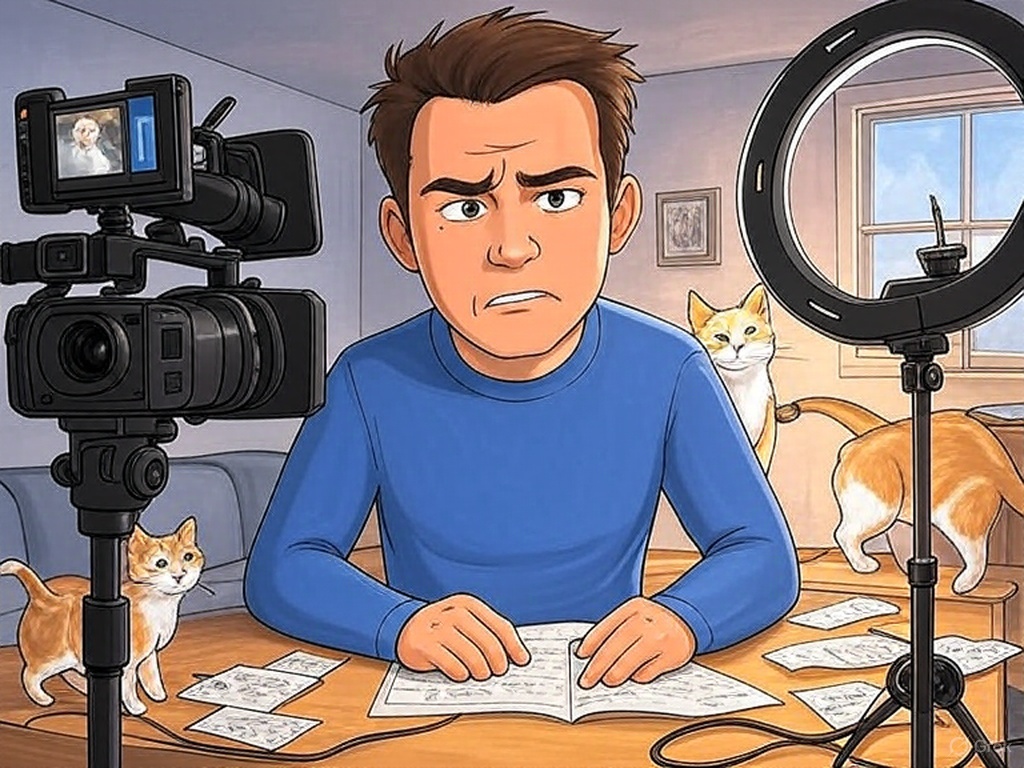
Self taping: The joys of wearing many hats!
In the ever-evolving world of acting, self-tapes have become a cornerstone of the audition process, especially since the rise of remote casting during the pandemic. While self-tapes offer convenience and accessibility, they also present a unique set of challenges for both new and experienced actors and performers. At BOPcast, we understand these struggles and are here to support you as you navigate this critical aspect of your career. Let’s explore some of the key difficulties actors face with self-tapes today and offer some insights on how to overcome them.
1. Technical Challenges: Equipment and Setup
One of the most immediate hurdles actors face with self-tapes is the technical setup. Unlike in-person auditions, where studios provide professional lighting, sound, and camera equipment, actors are now responsible for creating a high-quality recording at home. This often means investing in or sourcing the right tools:
- Camera Quality: Not everyone has access to a professional camera, and using a smartphone can sometimes result in grainy footage if the lighting isn’t optimal.
- Lighting: Natural light can be inconsistent, and setting up affordable lighting kits (like ring lights) requires knowledge of angles and color temperature to avoid harsh shadows or washed-out appearances.
- Sound: Background noise—whether it’s traffic, neighbors, or a barking dog—can ruin a take, and external microphones often pick up unwanted sounds if not positioned correctly.
- Background: Casting directors expect a neutral background, but finding a distraction-free space in a busy household can be tricky.
Tip: At BOPcast, we recommend starting with what you have—a smartphone with a decent camera can work wonders. Use natural light from a window, set up a plain backdrop (like a white sheet), and record in a quiet space. Black Octopus Productions also offers workshops on self-tape techniques, where you can learn how to optimize your setup.
2. Performance Authenticity: Acting for the Camera Alone
Self-tapes require actors to perform without the immediate feedback of a casting director or the energy of a live audition room. This can make it difficult to deliver an authentic performance:
- Lack of Direction: In-person auditions often include real-time feedback or adjustments from the casting team, but with self-tapes, actors must make choices independently, which can lead to second-guessing.
- Reader Challenges: Finding a reliable reader to deliver off-camera lines can be tough. If you’re reading with a non-actor (like a friend or family member), their lack of emotional delivery can throw off your performance.
- Camera Awareness: Performing for a camera feels different from a live audition—actors may feel self-conscious or struggle to connect with an imaginary scene partner, making their performance feel flat.
Tip: Practice makes perfect. Record multiple takes and review them to see where you can adjust your energy or emotional connection. BOPcast members can also connect with other performers through our platform to find a scene partner for self-tapes, ensuring you have a supportive reader to elevate your performance.
3. Time Constraints and Pressure
Self-tape auditions often come with tight deadlines, adding pressure to an already demanding process:
- Quick Turnarounds: Casting directors may request self-tapes within 24–48 hours, leaving little time to prepare, memorize lines, and perfect the recording.
- Balancing Responsibilities: Many actors juggle day jobs or other commitments, making it hard to find uninterrupted time to set up, rehearse, and film.
- Multiple Takes: The desire to submit a flawless tape can lead to endless retakes, eating into the limited time available and increasing stress.
Tip: Prioritize preparation—break down the script as soon as you receive it, and schedule a specific time to film. Aim for 3–5 solid takes, then choose the best one. Black Octopus Productions hosts workshops on audition preparation, where you can learn time-management strategies to streamline your self-tape process.
4. Meeting Casting Expectations
Casting directors often have specific requirements for self-tapes, and failing to meet these can hurt an actor’s chances:
- File Specifications: Requests for specific file formats, resolutions, or naming conventions (e.g., “FirstName_LastName_Role.mp4”) can be confusing, and mistakes may lead to disqualification.
- Framing and Presentation: Casting directors expect a medium shot (waist-up), a slate (introducing yourself), and a clean performance, but actors may struggle to get the framing right without assistance.
- Consistency Across Takes: If a scene requires multiple takes or angles, maintaining consistency in lighting, sound, and performance can be challenging.
Tip: Always read the casting brief carefully and follow instructions to the letter. Use a tripod or prop your phone to ensure consistent framing, and record a test clip to check your setup. BOPcast’s blog regularly features tips from industry professionals, including casting directors, to help you meet their expectations.
5. Emotional and Mental Toll
The self-tape process can take a significant emotional toll, especially when actors feel isolated or face rejection:
- Isolation: Without the camaraderie of in-person auditions, self-taping can feel lonely, and the lack of feedback can lead to self-doubt.
- Rejection Fatigue: Actors may submit dozens of self-tapes without hearing back, which can be disheartening, especially when they’ve invested time and effort into each one.
- Perfectionism: The ability to re-record endlessly can lead to overanalyzing every take, causing stress and diminishing confidence.
Tip: Build a support network—connect with other actors and performers through BOPcast to share experiences and encouragement. Focus on the process rather than the outcome, and celebrate small wins, like submitting a tape you’re proud of. Black Octopus Productions offers workshops that include mental health and resilience training to help you navigate the emotional challenges of acting.
Join BOPcast to Overcome Self-Tape Challenges
Self-tapes are here to stay, but you don’t have to face the challenges alone. BOPcast is dedicated to supporting new and experienced actors and performers by providing resources, community, and opportunities to grow. Create your profile today, connect with others, and join our workshops to master the art of self-taping. Let’s turn challenges into opportunities—together!


